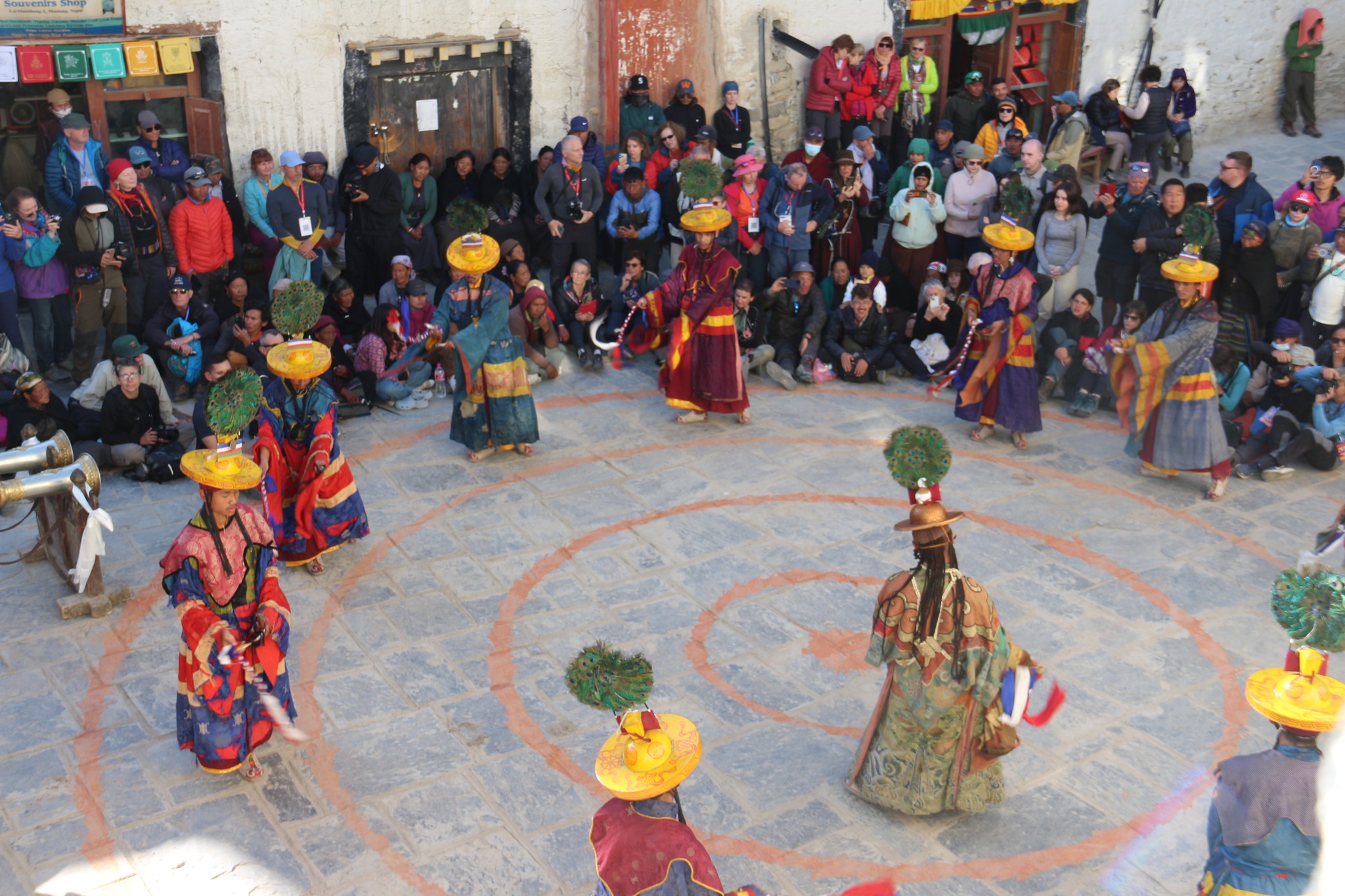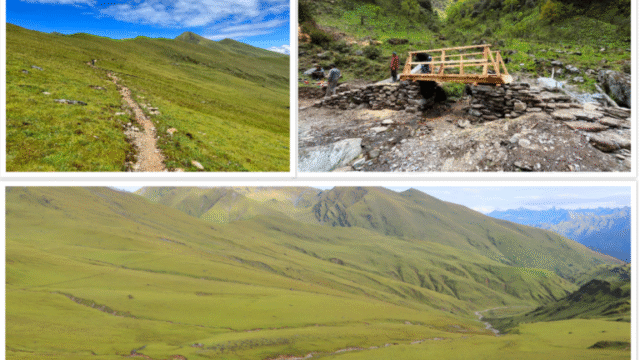The historic and culturally significant Tiji Festival has officially commenced in Lomanthang, Upper Mustang, beginning Saturday, May 24. Held annually in the remote region bordering the Tibetan Autonomous Region of northern China, this ancient religious and cultural celebration is deeply rooted in the local heritage of Mustang and revered as one of the most important festivals in the region.
Tiji, also known as “Tenchi” in the Tibetan language, is celebrated primarily by the Lowa (Lhochhoden) community, especially among the Gurung and Bista ethnic groups. It is believed to have been observed since the 8th century during the time of Guru Padmasambhava and was formalized as a major local festival during the 15th century under the reign of Mustang’s second royal prince, Angyen Sangwo.
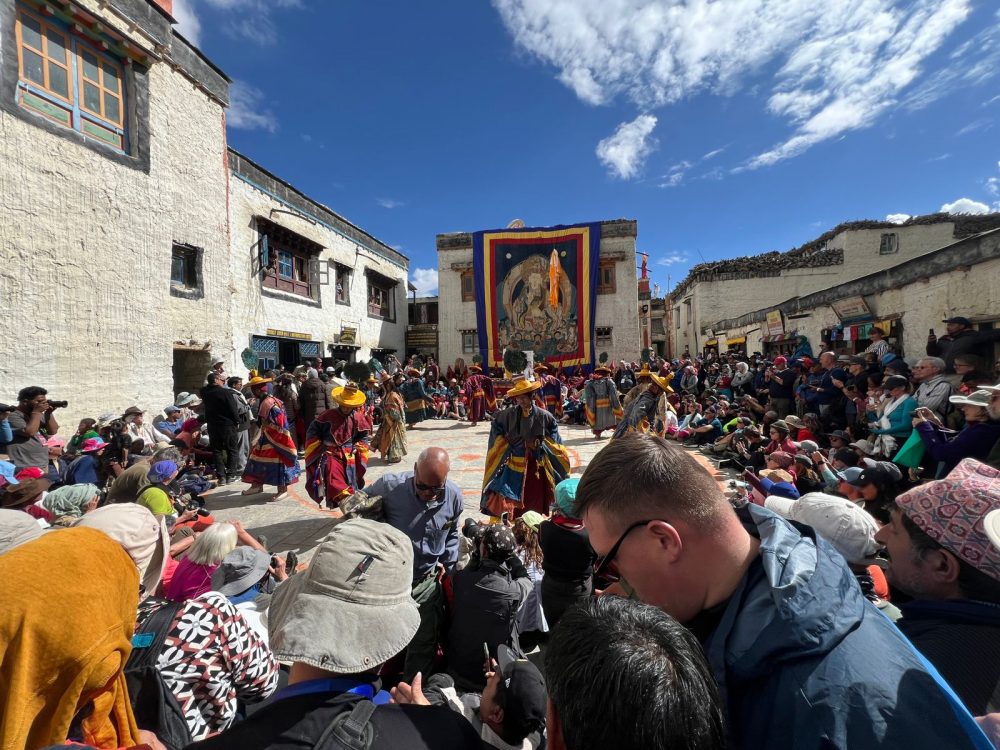
The festival began at the courtyard of the Mustang Cultural Royal Palace in Lomanthang with the joint financial support of Lomanthang Rural Municipality and Loghekar Damodarkunda Rural Municipality, and with the coordination of the Choede Monastery. The monks of Choede Monastery lead the religious proceedings of the three-day-long festival, which includes traditional prayers, mask dances, and community blessings.
Lomanthang Rural Municipality Chairperson Tashinurbu Gurung stated that Tiji is more than just a ritual it is the living embodiment of Upper Mustang’s cultural heritage. “This festival has played a key role in preserving harmony, fostering emotional unity, and symbolizing peace and prosperity in Upper Mustang,” he noted.
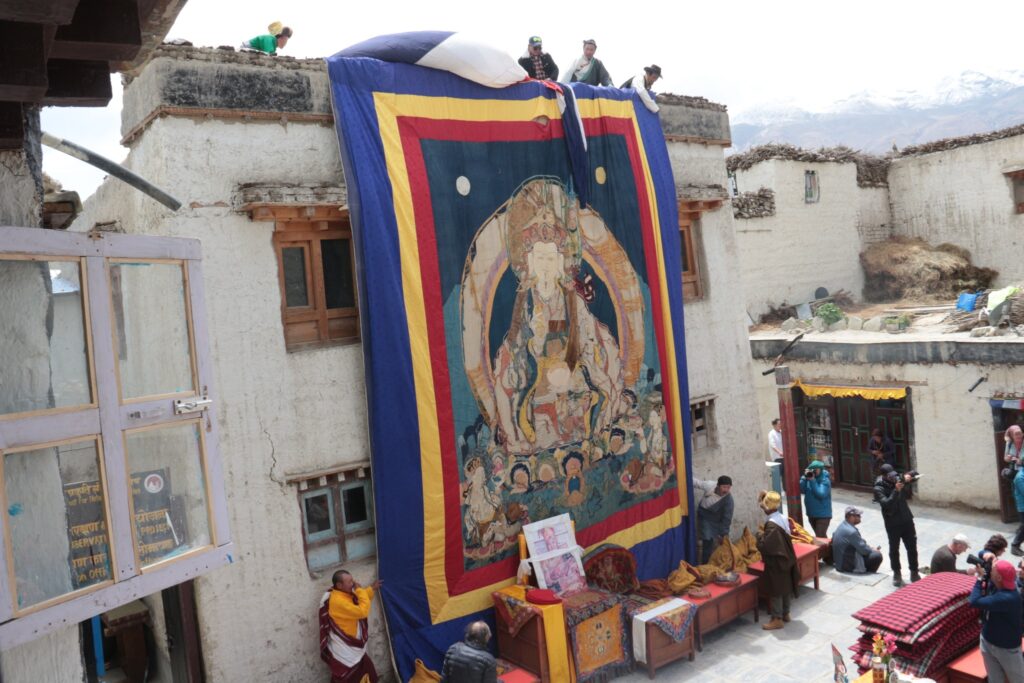
According to Lopsang Chhomphel Bista, the Chairperson of Loghekar Damodarkunda Rural Municipality, the festival is a religious tradition expanded into a cultural celebration by the Lowa community. “Tiji is a form of spiritual worship performed with the hope of ensuring peace, well-being, and protection from external threats,” he explained.
As per tradition, residents from all seven former Village Development Committees of Upper Mustang gather at Lomanthang during Tiji to participate in the community peace prayers. The Choede Monastery performs spiritual offerings to Vajrakilaya and Mahakala deities each morning from 6 AM to 12 PM during the three-day celebration. These rituals aim to protect the region from negative forces, safeguard crops, and promote health, harmony, and prosperity.
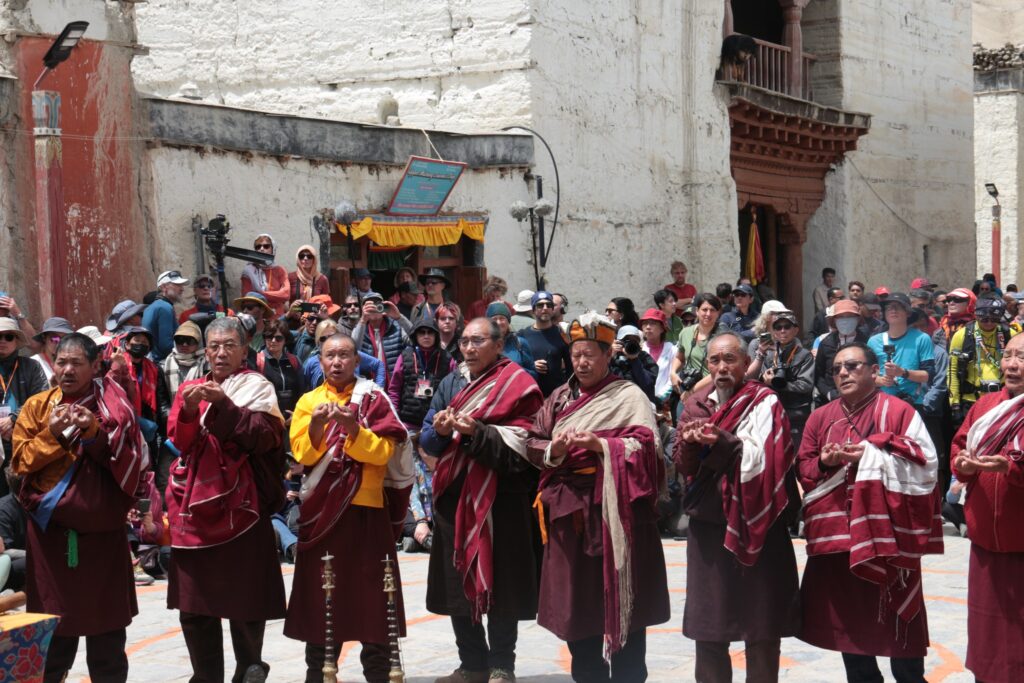
One of the most captivating aspects of the festival is the sacred dance performances by the monks of Choede Monastery. Adorned with elaborate masks and traditional attire representing Vajrakilaya and Mahakala, the monks perform 54 distinct dance rituals over three days. These dances, held in front of the historic palace courtyard, reflect the triumph of good over evil and are a visual manifestation of deep spiritual teachings.
Tiji Festival
The Tiji Festival concludes with a symbolic ritual where a ceremonial “Torma” (sculpted offering) used during the prayers is taken outside the village and ritually discarded. The location and direction for this symbolic dismissal are determined by monks after prayers, and the event is carried out by the royal family, community leaders, and villagers.
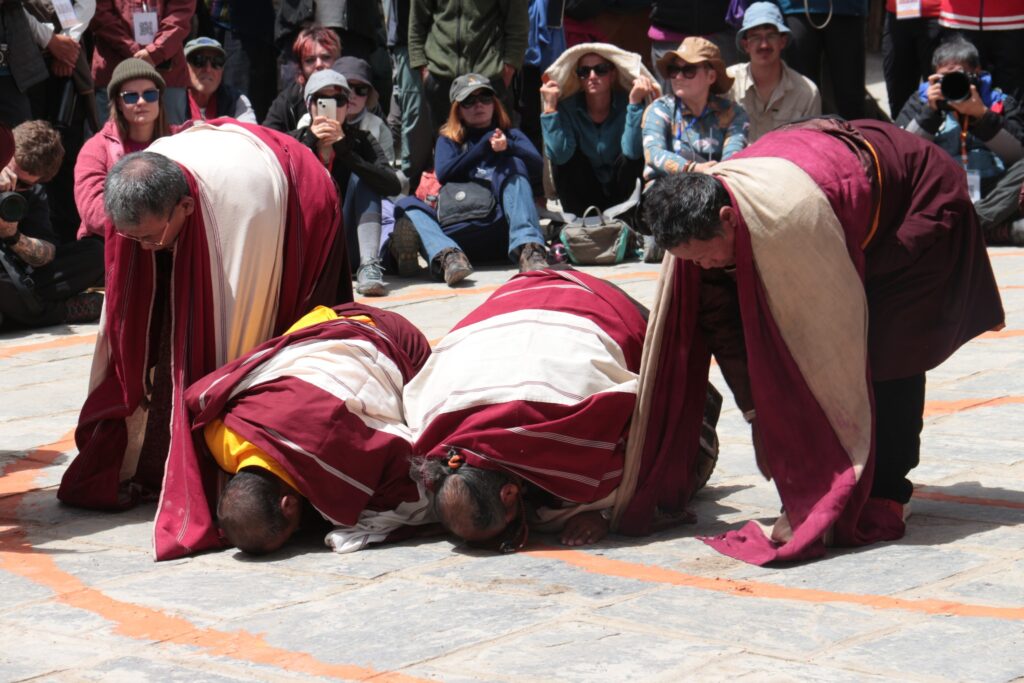
Before the festival begins, a large 30-foot-long thangka (a traditional Tibetan religious banner) of Guru Padmasambhava is hung near the dance area in the palace courtyard. According to Chhimi Gurung, Vice-Chairperson of Lomanthang Rural Municipality, this thangka is displayed only once a year during Tiji and is kept securely in the palace for the rest of the year.
The festival’s cultural richness and distinct Tibetan Buddhist influence have long drawn the attention of international tourists. According to Umesh Paudel, Chief of the Annapurna Conservation Area Project (ACAP) Lomanthang office, foreign visitors are captivated by the religious dances, unique rituals, and the vibrant spiritual atmosphere of the Tiji Festival. Many tourists document the event through photography and video, contributing to the global awareness of this unique Himalayan tradition.
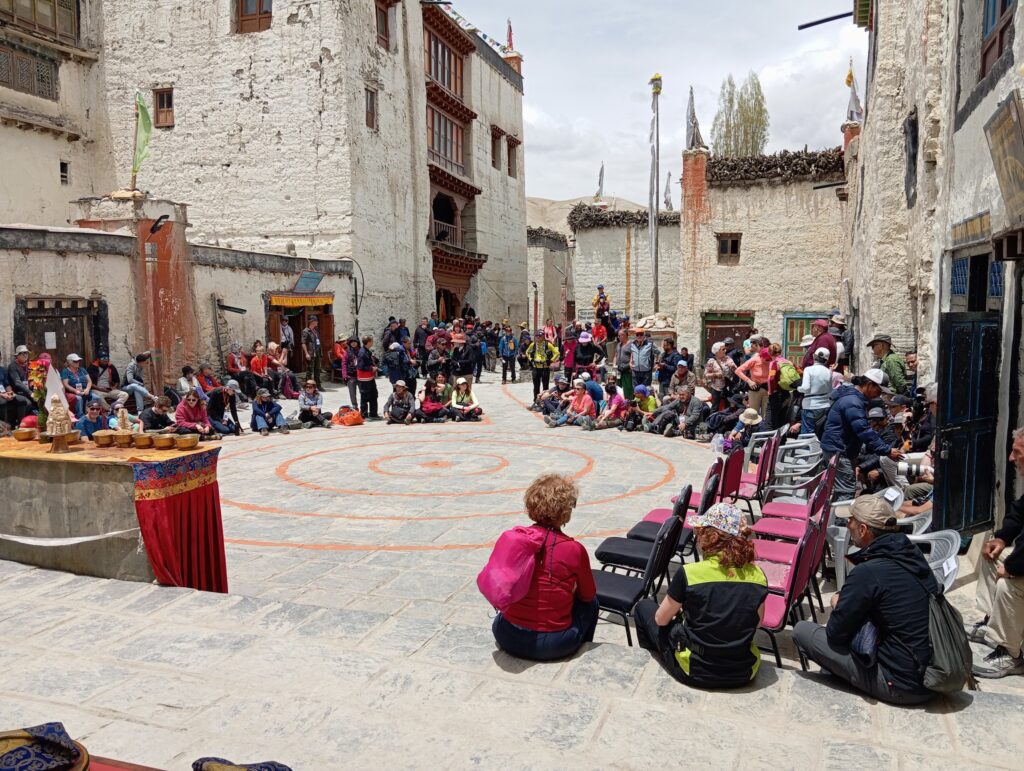
The festival has also seen a noticeable rise in tourism in the region. Just this week, 502 foreign tourists entered Upper Mustang to witness the Tiji Festival. From May 1 to May 23, 2025, a total of 755 international travelers visited the region. Since the beginning of 2025, Upper Mustang has welcomed 1,647 foreign tourists, demonstrating the growing global interest in this ancient cultural celebration.
While the festival was discontinued during the COVID-19 pandemic from 2020 to 2022, it has resumed with renewed vigor and community participation since 2023. Religious leader Lama Jhyampa Ghyacho Gurung of the Choede Monastery emphasized that Tiji has been consistently celebrated in Upper Mustang since 1963 and remains one of the most spiritually significant events in the region’s calendar. As the Tiji Festival continues to enchant both locals and visitors alike, it stands as a vibrant example of Nepal’s living heritage, blending sacred rituals, centuries-old traditions, and the unique Himalayan way of life in one breathtaking celebration.
